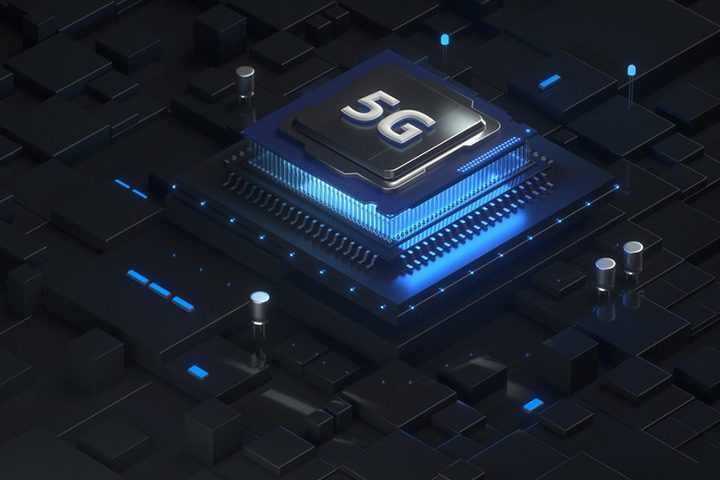
Generative AI is gradually becoming the cornerstone of many AI systems, as businesses use it to simplify operations, automate workflows, and provide tailored consumer experiences. As deep learning and neural networks progress, businesses will be able to leverage generative AI to create increasingly more engaging and personalized experiences. To get more knowledge and trends of generative AI, read this article on Generative AI and how it can benefit various industries.
What do you mean by Generative AI?
Generative AI is a field that uses machine learning techniques to enable computers to generate new and original content. It focuses on creating data rather than analyzing or making predictions based on existing data. This ability to generate unique content has immense potential in various fields, including art, music, and scientific research.
How does Generative AI work?
Generative AI models work by learning the underlying structures and patterns in a given dataset. They learn to capture the essence of the data and then use this knowledge to generate new data samples similar to the original data. The specific working mechanism varies depending on the generative AI model used.
What are the Various Models of Generative AI models?
While there are numerous kinds of generative AI models, here are the three most prominent ones:
1. Generative Adversarial Networks (GANs)
GANs consist of a discriminator network and a generator that compete against each other in a game-like setting. The generator develops new samples, and the discriminator tries to make it differentiate between the generated elements and real data. GANs can generate highly realistic and authentic outputs through this adversarial training process.
Highlights
Powerful Generative Capability: GANs can generate highly realistic and authentic outputs.
Adversarial Training: GANs improve through competition between the generator and discriminator networks.
Data-driven Learning: GANs learn directly from the data, capturing complex patterns and variations.
Applications
Style Transfer and Image Manipulation
Data Generation for Training Deep Learning Models
2. Variational Autoencoders (VAEs)
VAE can learn the underlying patterns in data and generate new data samples. They compile the input data into a lower-dimensional representation called the latent space. This latent space captures the essence of the data in a compact form.
VAEs then use this compressed representation to generate new samples that resemble the original data. One interesting aspect of VAEs is that they introduce randomness during generation. This randomness allows VAEs to produce diverse and unique outputs.
Highlights
Latent Space Representation: VAEs capture the essence of data by encoding it into a lower-dimensional latent space.
Probabilistic Generation: VAEs develop new data samples by sampling from the learned probability distribution in the latent space.
Continuous Learning: VAEs continuously learn and improve their generative capabilities through iterative training.
Applications
Text Generation and Language Modelling
Anomaly Detection and Data Augmentation
3. Autoregressive Models
They generate new data one step at a time based on the previous elements in a sequence. They learn the patterns and relationships within the data and use that knowledge to predict what comes next.
Furthermore, they capture dependencies and correlations between the elements in the sequence and generate new elements that fit well within the existing context.
Highlights
Training Efficiency: They can be trained efficiently since each element’s generation only depends on the previously generated elements.
Interpretability and Explainability: They provide interpretability as the generation process is step-by-step, making it easier to understand and analyze the model’s decision-making process.
Flexible and Scalable: They can handle sequences of varying lengths and adapt to different input sizes, making them suitable for various tasks and datasets.
Applications
Chatbots and Virtual Assistant
Music Composition and Generation
What are the Benefits of Generative AI?
Generative AI offers several benefits. Some of them are:
1. Creativity and Novelty
Generative AI can express creativity and produce content that replicates existing data and offers novel and innovative outputs. It catalyzes human creativity, inspiring artists to experiment with new ideas and broaden their perspectives.
It offers diverse and imaginative solutions to complex problems, driving innovation and transforming industries. Generative AI bridges the gap between artificial intelligence and human imagination, fostering a world of limitless creative possibilities.
2. Data Augmentation
Data augmentation is a crucial technique in machine learning that addresses the challenge of limited training data. Generative AI models excel by generating synthetic data that expands the training dataset.
The augmented data introduces additional variations and diversity, enriching the training set and enabling models to learn more robust representations. As a result, models trained on augmented data exhibit improved performance and increased resilience to variations.
3. Exploration and Discovery
Generative AI encourages exploration and discovery by generating a wide range of diverse outputs. It goes beyond your knowledge and helps you find new patterns and possibilities.
This ability to explore new territories and think outside the box sparks curiosity and inspires you to discover new perspectives.
4. Personalization
Generative AI can create personalized content that caters to your preferences and needs. Whether personalized product recommendations or customized user interfaces, generative AI can deliver content that resonates with you.
Eventually, personalization enhances your satisfaction and engagement, providing a unique and tailored experience that meets your requirements.
What are the Applications of Generative AI?
1. Art and Design
The global market for creative AI is projected to reach an impressive value of $3.3 billion by 2025, with a notable annual growth rate of 29.5%. Through the power of Generative AI, artists, and designers have endless possibilities to explore and create captivating visuals.
From intricate patterns to awe-inspiring illustrations, Generative AI enables the expansion of creative boundaries, pushing the limits of visual expression.
2. Music and Sound Generation
With the ability to analyze vast amounts of musical data and patterns, generative AI can create unique compositions and arrangements, offering endless creative possibilities. It can assist musicians, composers, and producers generate new musical ideas.
Its influence in the music industry is evident, with the Global Generative AI in the Music Market valued at $229 million in 2022, expected to skyrocket to $2,660 million by 2032, exhibiting the highest CAGR of 28.6%.
3. Image Resolution
Generative AI can enhance the resolution of images, allowing for the generation of high-quality visuals with greater clarity and detail. Moreover, It can reconstruct missing image details and interpolate pixel information, producing sharper and more refined images.
It can hold immense value in fields such as medical imaging, satellite imagery, and digital restoration, where precise visual information is critical.
4. Text-to-Speech
By employing advanced neural network architectures and speech synthesis techniques, Generative AI can transform written words into lifelike audio, mimicking human speech patterns, tone, and emotions.
This application finds widespread utility in voice assistants, audiobook production, accessibility services, and language learning platforms. With Generative AI, text can come to life as a seamless and expressive audio experience, bridging the gap between written content and human-like speech.
5. Virtual and Augmented Reality
Generative AI can generate realistic and dynamic virtual environments with detailed landscapes, interactive objects, and lifelike avatars. These virtual worlds can be experienced through VR headsets, providing users with an unparalleled sense of presence and immersion.
Additionally, Generative AI can enhance AR experiences by overlaying virtual elements onto the real-world environment, seamlessly blending the virtual and physical realms.
It can have wide applications in gaming, simulation, training, and entertainment industries, offering users captivating experiences that push the boundaries of reality.

6. Healthcare and Medicine
Generative AI can improve the healthcare industry with medical image synthesis, drug discovery, and personalized medicine. Moreover, by 2025, around 30% of new materials and drugs will be discovered using generative AI techniques.
By leveraging Generative AI, healthcare professionals can enhance diagnoses, accelerate therapeutic advancements, and improve patient outcomes.
Generative AI: The Future of Innovation
Generative AI can revolutionize the way you think about content creation and innovation. With its ability to generate new and original content, generative AI opens up various possibilities in various domains, from art and design to music, text, and even healthcare. As generative AI advances, you can expect further exciting applications and innovations.
If you’re interested in exploring the potential of generative AI for your business, contact a top Generative AI development company that provides excellent AI solutions and whose team can deliver solutions to streamline your business operations and increase efficiency.








